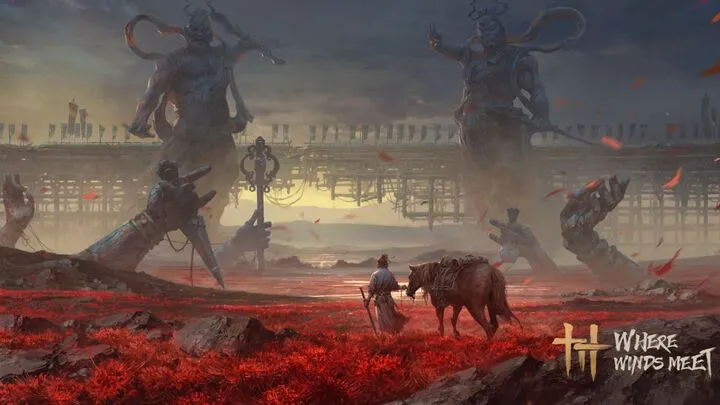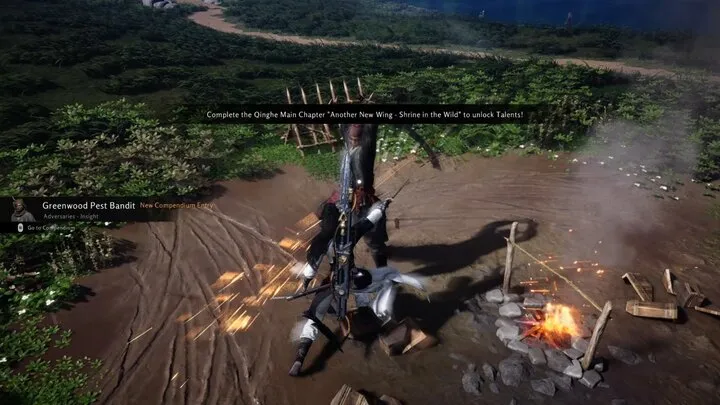Where Winds Meet is not just about exploring a vast wuxia world; it is about cultivating your martial arts, internal energy, and combat skills efficiently. Many players focus on fighting and leveling up without optimizing their cultivation path, which can lead to wasted time, weak performance in late-game content, and missed opportunities in faction interactions. This guide dives deep into strategies for maximizing cultivation, selecting the right skills, and progressing effectively from early to late game, ensuring players grow into powerful, versatile martial artists.

1. Understanding Cultivation Basics
Cultivation is the backbone of character growth. It governs internal energy, skill potency, and the ability to chain advanced techniques. Understanding the types of cultivation paths—wind, fire, water, and earth—is critical. Each branch offers unique benefits, and players must align their combat style, mobility, and moral choices to their chosen path.
Key cultivation principles
- Focus on one primary branch early to maximize efficiency
- Use secondary branches sparingly to complement your main style
- Pay attention to meridian unlocking order for optimal skill synergy
2. Early-Game Skill Prioritization
The first hours of cultivation set the foundation for later mastery. Players should prioritize basic survival and mobility skills before diving into high-level combat abilities. Early-game cultivation decisions impact how quickly you can explore, fight, and interact with NPCs effectively.
Essential early skills
- Wind dash for rapid positioning
- Basic internal energy recovery techniques
- Light melee or ranged attacks for crowd control
Early training tips
- Avoid wasting resources on overly advanced skills
- Combine practice with exploration to gain experience naturally
- Focus on skills that enhance both survival and mobility
3. Optimizing Internal Energy Growth

Internal energy (Qi) determines the power and efficiency of martial arts techniques. Efficient cultivation means balancing meditation, combat practice, and resource consumption. Players who neglect energy management often fail in high-level battles despite having high stats.
Energy optimization techniques
- Meditate in safe zones to regain large amounts of Qi
- Consume herbs and items that boost energy absorption
- Use combat chains that minimize energy waste
4. Mid-Game Skill Diversification
Once basic skills are mastered, players should begin diversifying their techniques. This includes learning complementary branches, advanced martial arts forms, and situational abilities to adapt to complex encounters.
Diversification strategies
- Pair Wind with Water for agility and stealth
- Combine Fire with Earth for burst damage and stability
- Prioritize skills that interact with environmental factors
Practical tips
- Train skills in context (combat, stealth, exploration)
- Upgrade only when the new skill offers tangible advantage
- Avoid spreading points too thin across many abilities
5. Advanced Combat Techniques
High-level combat in Where Winds Meet is about chaining attacks, timing counters, and exploiting enemy weaknesses. Cultivation enhances these techniques, but players must master control over timing, distance, and stamina to be effective.
Combat mastery tips
- Parry and counter to maximize damage and conserve Qi
- Use aerial combos with wind-assisted movement
- Exploit enemy weaknesses revealed by environmental cues
Combo examples
- Dash → Strike → Aerial Kick
- Deflect → Counter → Ground Slam
- Stamina drain → Retreat → Burst Attack
6. Faction and Mentor Influence
Mentors and factions can accelerate cultivation growth through exclusive techniques, rare items, and skill training. Selecting the right mentor or faction early influences your skill tree development, resource access, and combat strategies.

Faction advantages
- Access to unique cultivation manuals
- Special training sessions for internal energy efficiency
- Favorable interactions in quests and events
Mentor strategies
- Choose mentors aligned with your primary cultivation branch
- Balance loyalty with freedom to explore alternative techniques
- Complete mentor quests to unlock rare skill upgrades
7. Resource and Item Management
Cultivation requires not just time, but careful management of resources like herbs, energy-enhancing items, and equipment. Late-game efficiency often hinges on having the right resources at the right moment.
Key resource strategies
- Stockpile herbs that boost internal energy recovery
- Prioritize crafting materials for skill-enhancing items
- Use consumables strategically during boss encounters
Inventory tips
- Organize by usage frequency
- Upgrade storage early to avoid wasting time
- Track rare resource locations for repeatable farming
8. Late-Game Mastery and Skill Synergy
By the late game, mastery depends on how well skills synergize across branches and how efficiently cultivation was optimized earlier. Advanced players combine multiple branches, environmental knowledge, and precise timing to dominate.
Late-game techniques
- Chain complementary branches for high-damage combos
- Exploit wind and terrain in all encounters
- Adjust strategy dynamically based on enemy behavior
Skill synergy examples
- Wind + Fire for mobility and burst damage
- Water + Earth for stealth and crowd control
- Multi-branch chains for ultimate boss strategies
9. Continuous Growth and Optimization

Even at the highest levels, Where Winds Meet rewards players who refine their cultivation, test new skill chains, and adjust strategies. Continuous growth is about experimentation, observing environmental effects, and responding to evolving combat scenarios.
Optimization habits
- Periodically respec skills to optimize for new challenges
- Track faction changes and adjust alliances
- Practice advanced combos in controlled environments
Endgame philosophy
- Treat cultivation as a lifelong progression, not just stats
- Focus on harmony between skill, energy, and strategy
- Adaptation is key: no single path dominates all scenarios
10. Conclusion
Maximizing cultivation and skill progression in Where Winds Meet requires strategic planning, careful resource management, and continuous adaptation. From early-game survival to late-game mastery, players who optimize internal energy, skill synergy, and faction interactions achieve a fluid, powerful martial artist capable of thriving in any scenario. Mastery comes from balancing exploration, combat, and cultivation—not simply leveling up.

















